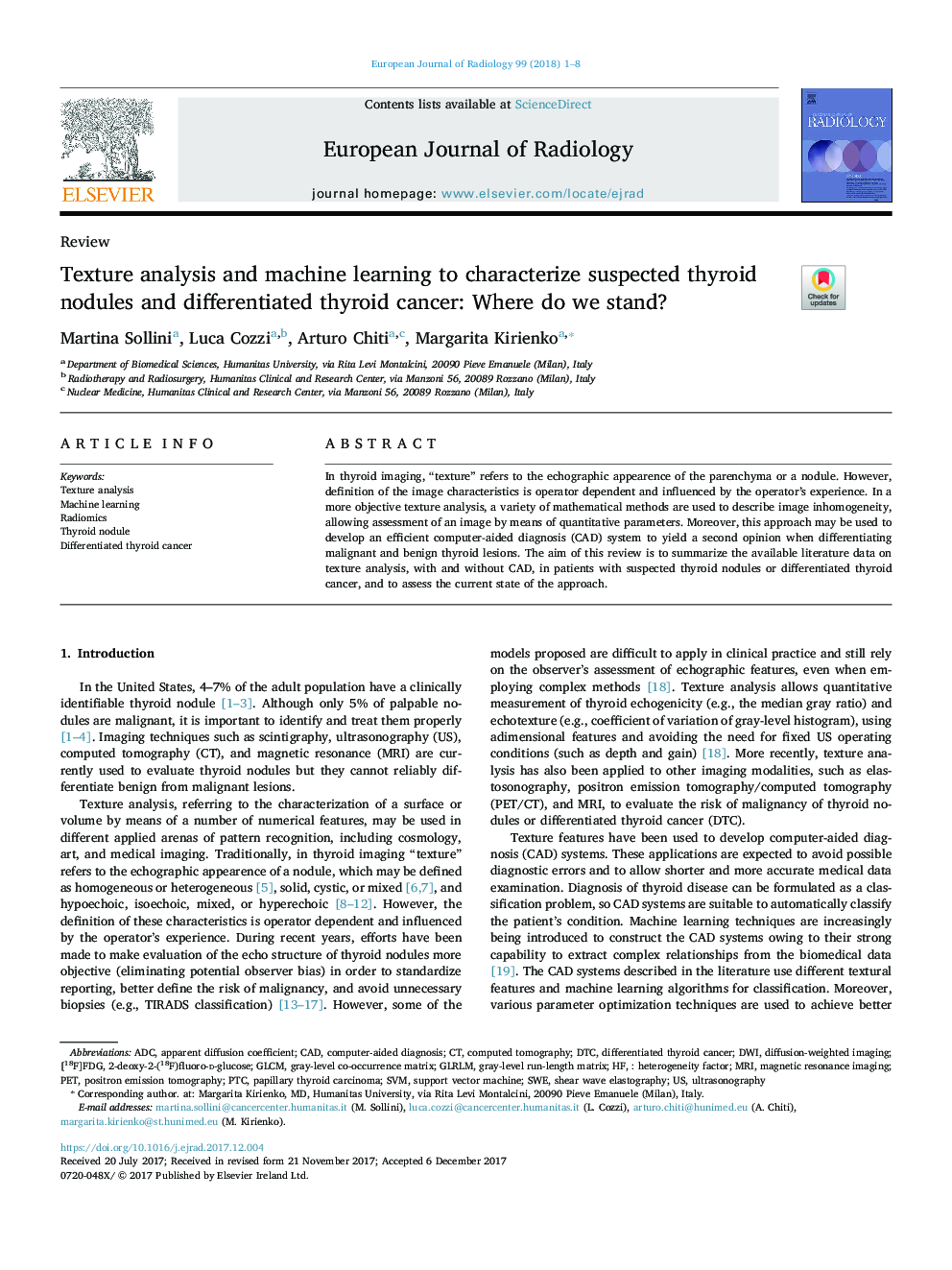| Article ID | Journal | Published Year | Pages | File Type |
|---|---|---|---|---|
| 8822763 | European Journal of Radiology | 2018 | 8 Pages |
Abstract
In thyroid imaging, “texture” refers to the echographic appearence of the parenchyma or a nodule. However, definition of the image characteristics is operator dependent and influenced by the operator's experience. In a more objective texture analysis, a variety of mathematical methods are used to describe image inhomogeneity, allowing assessment of an image by means of quantitative parameters. Moreover, this approach may be used to develop an efficient computer-aided diagnosis (CAD) system to yield a second opinion when differentiating malignant and benign thyroid lesions. The aim of this review is to summarize the available literature data on texture analysis, with and without CAD, in patients with suspected thyroid nodules or differentiated thyroid cancer, and to assess the current state of the approach.
Keywords
Gray-level co-occurrence matrixDTCADC2-deoxy-2-(18F)fluoro-d-glucoseSWEGLCMPTCDWI[18F]FDGMRIShear wave elastographyTexture analysisDifferentiated thyroid cancerComputer-aided diagnosisdiffusion-weighted imagingMagnetic resonance imagingcomputed tomographyPositron emission tomographyRadiomicsUltrasonographyapparent diffusion coefficientCADSVMSupport vector machineThyroid nodulePETPapillary thyroid carcinomaMachine learning
Related Topics
Health Sciences
Medicine and Dentistry
Radiology and Imaging
Authors
Martina Sollini, Luca Cozzi, Arturo Chiti, Margarita Kirienko,
